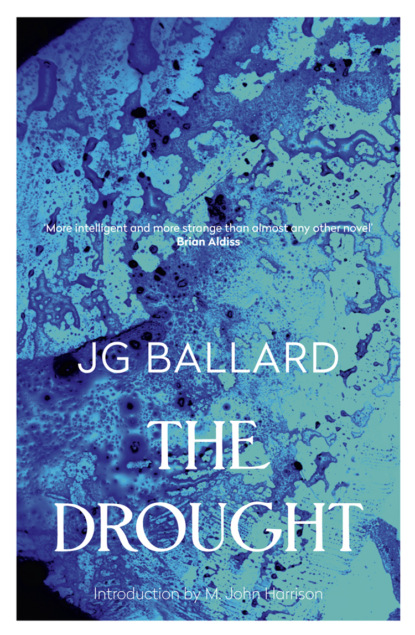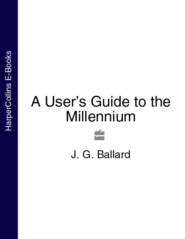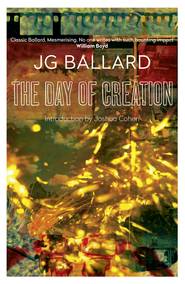По всем вопросам обращайтесь на: info@litportal.ru
(©) 2003-2024.
✖
The Drought
Настройки чтения
Размер шрифта
Высота строк
Поля
22. Multiplication of the Arcs (#litres_trial_promo)
23. The Fairground (#litres_trial_promo)
24. The Bitter Sea (#litres_trial_promo)
PART TWO (#litres_trial_promo)
25. Dune Limbo (#litres_trial_promo)
26. The Lagoon (#litres_trial_promo)
27. The Tidal Waves (#litres_trial_promo)
28. At the Settlement (#litres_trial_promo)
29. The Stranded Neptune (#litres_trial_promo)
30. The Sign of the Crab (#litres_trial_promo)
31. The White Lion (#litres_trial_promo)
PART THREE (#litres_trial_promo)
32. The Illuminated River (#litres_trial_promo)
33. The Train (#litres_trial_promo)
34. The Mannequins (#litres_trial_promo)
35. The Smoke Fires (#litres_trial_promo)
36. The Mirage (#litres_trial_promo)
37. The Oasis (#litres_trial_promo)
38. The Pavilion (#litres_trial_promo)
39. The Androgyne (#litres_trial_promo)
40. The Dead Bird (#litres_trial_promo)
41. A Drowning (#litres_trial_promo)
42. ‘Jours de Lenteur’ (#litres_trial_promo)
The Ballard Tradition (#litres_trial_promo)
Cataclysms and Dooms (#litres_trial_promo)
About the Author (#litres_trial_promo)
By the same author (#litres_trial_promo)
About the Publisher (#litres_trial_promo)
INTRODUCTION (#ud8b4cf75-257c-5a37-b2c5-492d8ad3b612) BY M. JOHN HARRISON
Disaster fiction has as long a history as the anxieties it represents. For the British at the end of World War Two it was retrospectively concerned with loss of empire, loss of status, and, after five years of war, the sense of how quickly a comfortable life could be lost; but it also articulated a fear of further change. The pre-war middle classes were forced to confront new science, new technologies and a new world order. In a dozen or so years their landscape had changed irreversibly.
1951: a not very successful writer called John Wyndham Parkes Lucas Beynon Harris shortened his name, gave up trying to supply the American market with soft-boiled science fiction, and offered an entire generation a way of representing their new condition: after them, he promised, would come the deluge. This turned out to be a popular and curiously comforting narrative. The Day of the Triffids, an account of the defeat of humanity by implacable half-sentient vegetables, allowed a soft approach to the national sense of confusion and grief by expressing it metaphorically. The real decline was mourned in the fictional one, which simultaneously repressed and expressed it. Not everyone, however, saw change as a catastrophe.
In 1943, James Graham Ballard, adolescent son of an English textile chemist employed in the Shanghai International Settlement, had been interned by the Japanese. The Ballard family exchanged a life of comfort and stability – picnics, film premieres and fancy-dress parties – for the half-ruined buildings and barbed wire of the Lunghua Civilian Assembly Centre. Ballard observes in his autobiography Miracles of Life that his parents and their peers seemed to miss only the enormous amounts of alcohol they were used to consuming. In its absence they performed the plays of Noël Coward and ate the maggots in the daily rice. His sister was treated for dysentery. Towards the end of his stay malnutrition left ‘Shanghai Jim’ with skin infections and a prolapsed rectum. Yet he remembers the camp as ‘my last real childhood home, where I would spend the next two and a half largely happy years’. A few acres of rubble, smelling of sewage and ‘shared with a million mosquitoes’, became his site of instruction, its uncertainties in themselves enough of a promise. Years later, a writer in search of a centralising metaphor, he came to view post-war Britain as a similar zone of anxiety and freedom.
Trading on nostalgia and an appeal to male competence, The Day of the Triffids had quickly established a thriving subgenre of essentially political fiction, in which the appropriate response to the catastrophe was to begin re-establishing the past, often by starting an allotment. By contrast, J. G. Ballard dreamt forward. His stories became sites of metaphysical play and a kind of Swiftian satirical reversal later mimicked in the work of his admirers Martin Amis and Will Self. Nevertheless The Drought begins with all the assumptions of the traditional disaster: Earth’s oceans, coated with an accidentally generated polymer, have ceased to evaporate. Rainfall has failed, perhaps for the time being, perhaps forever. Civilisation, as you might predict, has fallen apart.
In a landscape closely resembling the shores of the Salton Sea, some remnants of humanity – viewed through the flattened affect of Dr Charles Ransom, the story’s central character, as if they were always in the distance – scuttle about trying to understand what a change like this might mean in terms of the built environment they relied upon not so long ago for psychic as well as physical support. Architect Richard Foster Lomax and his sister Miranda, expending the last of the city’s water via the lawn sprinklers and fountains in the grounds of their ‘glass and concrete folly’; Quilter, Lomax’s dwarf henchman, with his deformed skull and ‘instinct for failure’; Philip Jordan, the adolescent ‘starveling of the river ways, creating his own world out of the scraps and refuse of the twentieth century’; cool and reserved Catherine Austen, Early Ballardian Woman obsessed with the white lions in the failing zoo; the Reverend Howard Johnstone, head of the local militia and last normative figure in the community, nevertheless tempted to ‘accept the challenge and set off north, right into the centre of the drought’: the psychic projects, collective and individual, of these self-obsessed survivors proliferate and flower as garishly as the mutated sea-anemone in that other early masterwork of Ballard’s, ‘The Voices of Time’.
Meanwhile, Dr Ransom, born under ‘the sign of the crab … the sign of deserts’, his own desires shifting and uncertain in the harsh authorial light, favours any plan or structure, however contrary or ambiguous, that seems to ‘trap time’ in movement and colour, fixing it even as it dissipates. At points of maximum stress, the novel itself seems to become one of these Surrealist contraptions, relieving its internal tensions not through plot but via sudden gorgeous displays of imagery. Lions hunt fishermen through a deserted city; fishermen, slipping along the streets with their nets at the ready, fish for men; dead fish ‘like putrid jewels’ hang in the brackish water of a ‘drowned’ aquarium. The night fills with meaningless fireworks, the world is in flames. A black swan launches itself into the air, ‘burning cinders falling around it’. These symbols are not so much the record of a disaster as of the liberated contents of the unconscious.
It would be easy to interpret this novel as Ballard’s pataphysical reworking of The Tempest. Richard Lomax makes a satisfyingly neo-liberal Prospero. By page twenty-one, Philip Jordan has already been described as ‘the river’s last presiding Ariel’. Miranda, of course, is Miranda – though in this incarnation she’s clearly been unable to resist Quilter’s Caliban semiotics. But other appropriations abound: false Noahs, failed Crucifixions, flickering reiterations of Ulysses and Madame Sosostris and Tiresias the blind prophet. The river’s tent is broken. The waste land is in itself a shifting signifier, as much a mirage as a site of mirages. Both Quilter and Philip Jordan take a turn as the Ancient Mariner, and there are many, many albatrosses. In their endless recombination these symbols lose their significance; and as meaning itself thins out, so geography begins to lose its meaning too. As a boy, Ballard tells us in Empire of the Sun (one of his less official autobiographies), he was intrigued by the bidding conventions of the game of bridge, ‘a code within a code’. This paranoid-critical sense of one algorithm packed into another haunts his fiction. Everything – the shape of a salt dune, the arrangement of some elongated shadow at the photographer’s magic hour, the turn of a woman’s head, the intersection of two walls – seems to be decodable. Yet every image is so saturated with significance that, paradoxically, nothing can be made of it.
The drought at the heart of The Drought is cultural. Culture is withering. In the guise of rainfall, old social and political meanings run down to the sea and are decreasingly renewed. Where the land seemed fertile, its inhabitants can now admit that it is exhausted. ‘It seems’, Ransom says at one point, ‘that we have a knack of turning everything we touch into sand and dust. We’ve even sown the sea with its own salt.’ This exhaustion – despite the Jungian, the essentially spiritual metaphor – is less important than you would think. Loss, in Ballard, is as much a canard as an albatross or burning swan; it is just something that must occur so that the dream forward into the new can begin.
Like so many science-fiction writers, Ballard and Wyndham were describing not the future but the present. If Wyndham’s assumption was that we had a duty to what we had lost, and must therefore painstakingly rebuild it (‘So we must regard the task ahead as ours alone,’ begins the final paragraph of The Day of the Triffids), Ballard’s was that no loss had occurred – we had only changed. We are, day by day, always already a new form of life. Prospero’s island – set in its sea of uncertain chemistries and unintended consequences – is as much a domain of opportunity as horror. The Drought makes a compelling drama out of the thrills and spills of eco-catastrophe, but it was the end of its author’s unstable, contrarian relationship with the disaster story. His publisher refused to publish it on the grounds that it wasn’t ‘proper science fiction’. By 1965, he had already begun to look in other directions. In The Drought we see him pacing hungrily around his own work, looking for ways to let it out of the zoo and into a reconfigured landscape, where it can cannibalise itself freely.
A 1970 issue of New Worlds, the magazine which, under the editorship of John Carnell then Michael Moorcock, had encouraged and supported Ballard from the beginning, ran a cover that asked rhetorically: ‘WHAT IS THE EXACT NATURE OF THE CATASTROPHE?’ A post-Ballardian generation was emerging. Ballard himself had finished the last of his quartet of catastrophes, The Crystal World, and moved on. In Crash, Concrete Island and The Atrocity Exhibition, his style increasingly confident and codified, he would begin to make and use new tools, new grammar, new algorithms, new metaphysical instruments to dream himself further into the world’s possibilities.
Broseley, 2014
Part One (#ud8b4cf75-257c-5a37-b2c5-492d8ad3b612)
1 The Draining Lake (#ud8b4cf75-257c-5a37-b2c5-492d8ad3b612)
At noon, when Dr Charles Ransom moored his houseboat in the entrance to the river, he saw Quilter, the idiot son of the old woman who lived in the ramshackle barge outside the yacht basin, standing on a spur of exposed rock on the opposite bank and smiling at the dead birds floating in the water below his feet. The reflection of his swollen head swam like a deformed nimbus among the limp plumage. The caking mud-bank was speckled with pieces of paper and driftwood, and to Ransom the dream-faced figure of Quilter resembled a demented faun strewing himself with leaves as he mourned for the lost spirit of the river.
Ransom secured the bow and stern lines to the jetty, deciding that the comparison was less than apt. Although Quilter spent as much time watching the river as Ransom and everyone else, his motives would be typically perverse. The continued fall of the river, sustained through the spring and summer drought, gave him a kind of warped pleasure, even if he and his mother had been the first to suffer. Their derelict barge – an eccentric gift from Quilter's protector, Richard Foster Lomax, the architect who was Ransom's neighbour – had now taken on a thirty-degree list, and a further fall of even a few inches in the level of the water would split its hull like a desiccated pumpkin.
Shielding his eyes from the sunlight, Ransom surveyed the silent banks of the river as they wound westwards to the city of Mount Royal five miles away. For a week he had been out on the lake, sailing the houseboat among the draining creeks and mud-flats as he waited for the evacuation of the city to end. After the closure of the hospital at Mount Royal he intended to leave for the coast, but at the last moment decided to spend a few final days on the lake before it vanished for good. Now and then, between the humps of damp mud emerging from the centre of the lake, he had seen the distant span of the motor-bridge across the river, the windows of thousands of cars and trucks flashing like jewelled lances as they set off along the coast road for the south; but for most of the period he had been alone. Suspended like the houseboat above the dissolving glass of the water, time had seemed becalmed.
Ransom postponed his return until all movement along the bridge had ended. By then the lake, once a stretch of open water thirty miles in length, had subsided into a series of small pools and channels, separated by the banks of draining mud. A few last fishing craft sailed among them, their crews standing shoulder to shoulder in the bows. The drab-suited men from the settlement, thin faces hidden under their black caps, had gazed at Ransom's houseboat with the numbed expressions of a group of lost whaling men too exhausted by some private tragedy to rope in this stranded catch.
By contrast, the slow transformation of the lake exhilarated Ransom. As the wide sheets of water contracted, first into shallow lagoons and then into a maze of creeks, the wet dunes of the lake bed seemed to emerge from another dimension. On the last morning he woke to find the houseboat beached at the end of a small cove. The slopes of mud, covered with the bodies of dead birds and fish, stretched above him like the shores of a dream.
As he approached the entrance to the river, steering the houseboat among the stranded yachts and fishing boats, the lakeside town of Hamilton was deserted. Along the fishermen's quays the boat-houses were empty, and the white forms of the drying fish hung in the shadows from the lines of hooks. Refuse fires smouldered in the waterfront gardens, their smoke drifting past the open windows that swung in the warm air. Nothing moved in the streets. Ransom had assumed that a few people would remain behind, waiting until the main exodus to the coast was over, but Quilter's presence, like his ambiguous smile, in some way was an obscure omen, one of the many irrational signs that had revealed the real progress of the drought during the confusion of the past months
A hundred yards to his right, beyond the concrete pillars of the motor-bridge, the wooden piles of the fuel depot were visible above the cracked mud. The floating pier had touched bottom, and the fishing boats usually moored against it had moved off into the centre of the channel. Normally, in late summer, the river would have been three hundred feet wide, but it was now barely half this – a shallow creek winding its slow way along the flat gutter of the banks.
Next to the fuel depot was the yacht basin, with the Quilters' barge moored against its bows. After signing the vessel over to them at the depot, Lomax had added a single gallon of diesel oil in a quixotic gesture of generosity, barely enough fuel for the couple to navigate the fifty yards to the basin. Refused entry, they had taken up their mooring outside. Here Mrs Quilter sat all day on the hatchway, her faded red hair blown around her black shawl, muttering at the people going down to the water's edge with their buckets.










